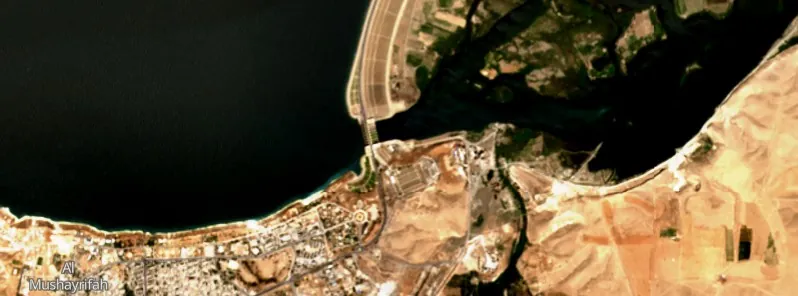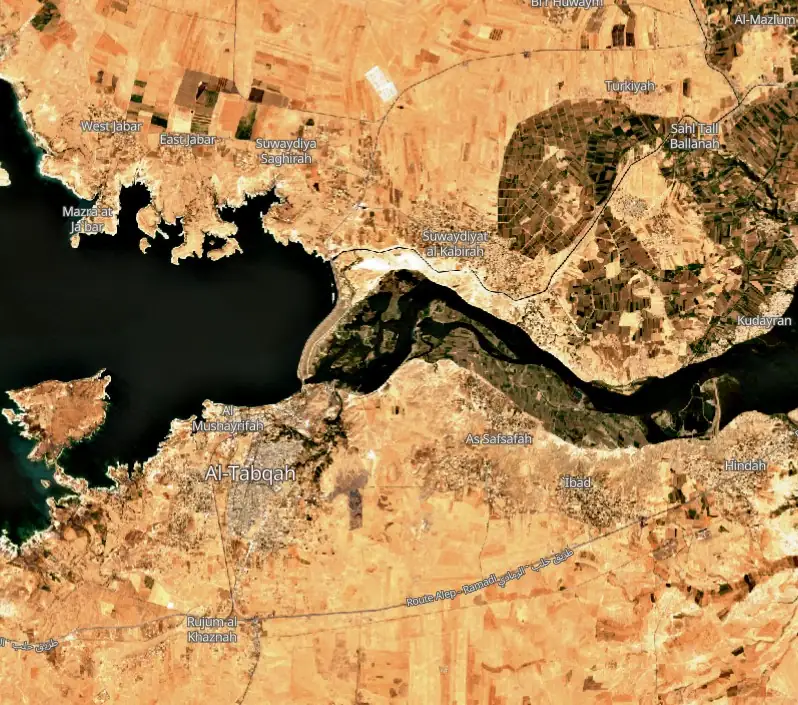Euphrates River’s water level hits historic low at Tabqa Dam, Syria

The water level of the Euphrates River has plummeted drastically over the past three weeks, reaching a concerning historical low at Tabqa Dam, Syria. This alarming decline has left the Alouk water station non-functional since June 23, impacting close to one million residents of the Hassakeh governorate in various vital sectors.
Located 40 km (25 miles) upstream from the city of Raqqa, the Tabqa Dam, constructed in the 1970s, stands as one of the most significant hydroelectric dams in Syria. It’s not only an essential provider of electricity but also plays a pivotal role in water regulation for a significant portion of the region. However, over the past three weeks, the dam’s reservoir has witnessed unprecedentedly low water levels.
A consequence of this depletion is the continuous inactivity of the Alouk water station since June 23, delivering a hard blow to almost a million residents in the Hassakeh governorate. Impacts span across the domains of health, agriculture, electricity production, and more.

The region’s water crisis has not just hampered daily life but is evolving into a significant health hazard. Access to fresh water is dwindling, resulting in an increase in waterborne diseases. A notable surge in cases of scabies have been reported, particularly within Internally Displaced Persons (IDP) camps.
Yearly summer declines in the river’s water levels have reached alarming proportions over the past couple of years, raising concerns about humanitarian consequences.
Since the start of the Syrian conflict, Turkey has been accused of weaponizing the Euphrates River’s water levels. They have reportedly sidestepped a 1987 agreement with Syria that mandates releasing 500 cubic meters of water per second, a supply which Syria subsequently divides with Iraq. However, the current instability in Syria has granted Turkey an unchecked hand over the river, and accusations are rife about Turkey not meeting its water release obligations.
Summer challenges have further strained the water situation. After spring, the river’s natural water flow dwindles, and with Turkey reportedly taking more than its fair share, the water reaching Syria and subsequently Iraq is declining rapidly. The situation worsened in the summer of 2021 when water levels in the Tişrîn Dam Lake plunged to 4 m (13 feet) and the Euphrates Dam recorded a level of just 6 m (19 feet).
References:
1 Syria – Water Crisis – DG ECHO – August 16, 2023
2 Turkey further reduces Euphrates water in summer increasing problems in Northern and Eastern Syria – ANF – June 8, 2023
Featured image: Tabqa Dam on August 5, 2023. Credit: Copernicus EU/Sentinel-2, EO Browser, The Watchers

The end is near. The “drying up” of the Euphrates and Tigris rivers means we’re close. Just imagine a massive earthquake in Israel (Ezekiel 38:19) and the impact on the surrounding nations.